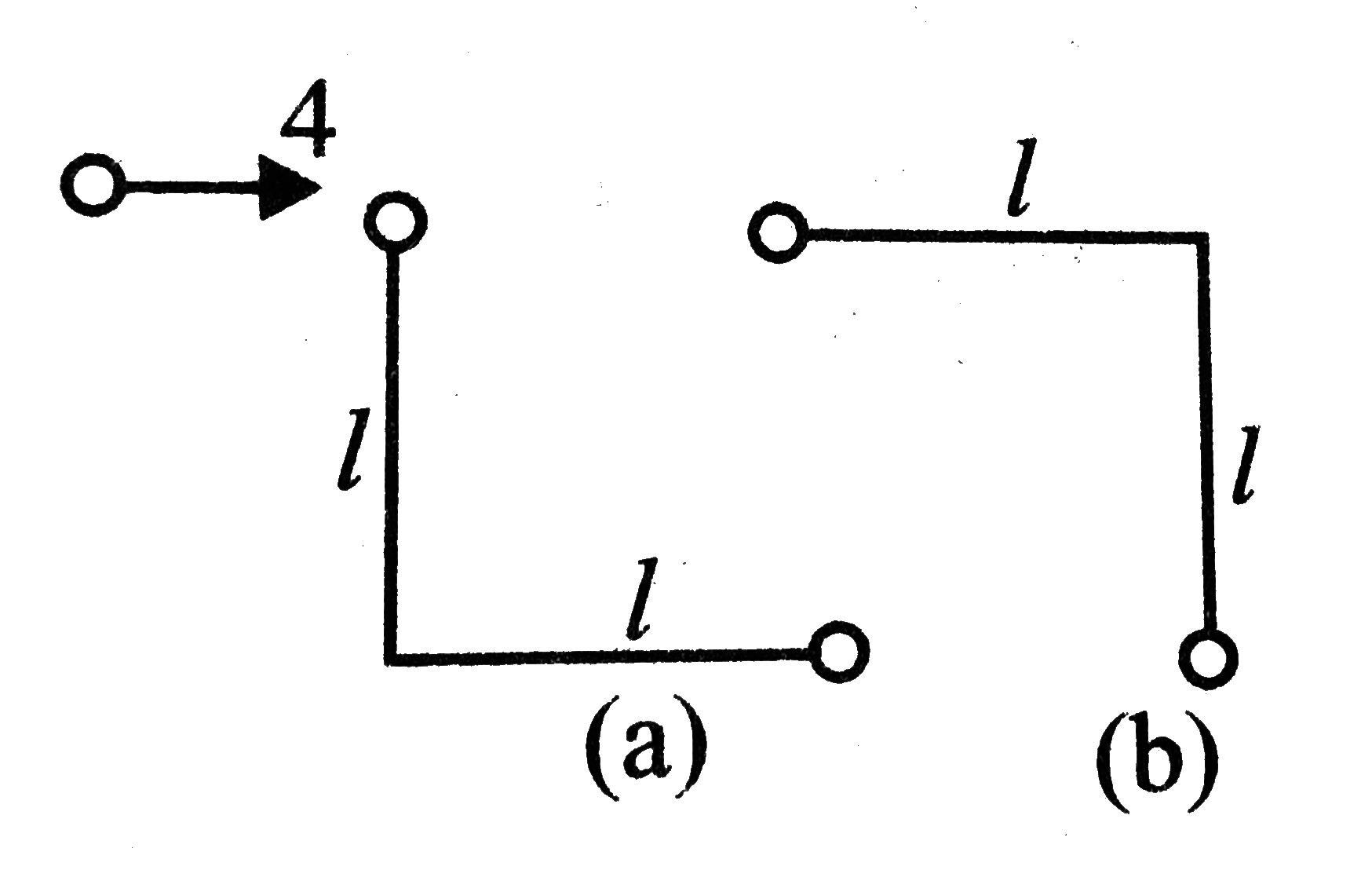A ball of mass M moving with speed v collides perfectly inelastically with another ball of mass m at rest. The magnitude of impulse imparted to the first ball is
mv
mv2
3mv2
None of these
To solve the problem of finding the magnitude of impulse imparted to the first ball during a perfectly inelastic collision, we can follow these steps:
Step 1: Understand the scenario
We have two balls:
- Ball 1: Mass = M, Initial speed = v
- Ball 2: Mass = m, Initial speed = 0 (at rest)
Step 2: Apply the principle of conservation of momentum
In a perfectly inelastic collision, the two objects stick together after the collision. We can use the conservation of linear momentum to find the final velocity after the collision.
The initial momentum of the system (before collision) is:
pinitial=M⋅v+m⋅0=Mv
The final momentum of the system (after collision) when both balls stick together is:
pfinal=(M+m)⋅v′
where v′ is the final velocity of the combined mass.
Setting the initial momentum equal to the final momentum gives us:
Mv=(M+m)⋅v′
Step 3: Solve for the final velocity v′
Rearranging the equation to solve for v′:
v′=MvM+m
Step 4: Calculate the impulse imparted to the first ball
Impulse is defined as the change in momentum. The impulse imparted to the first ball can be calculated as:
Impulse=Δp=pfinal−pinitial
The initial momentum of the first ball is:
pinitial=Mv
The final momentum of the first ball (after the collision) is:
pfinal=M⋅v′=M⋅MvM+m=M2vM+m
Now, substituting these into the impulse formula:
Impulse=M2vM+m−Mv
Step 5: Simplify the expression
To simplify:
Impulse=M2v−Mv(M+m)M+m
=M2v−M2v−MmvM+m
=−MmvM+m
Since we are interested in the magnitude of impulse, we take the absolute value:
Magnitude of Impulse=MmvM+m
Final Answer
Thus, the magnitude of impulse imparted to the first ball is:
Impulse=MmvM+m
---
We have two balls:
- Ball 1: Mass = M, Initial speed = v
- Ball 2: Mass = m, Initial speed = 0 (at rest)
In a perfectly inelastic collision, the two objects stick together after the collision. We can use the conservation of linear momentum to find the final velocity after the collision.
pinitial=M⋅v+m⋅0=Mv
pfinal=(M+m)⋅v′
where v′ is the final velocity of the combined mass.
Mv=(M+m)⋅v′
Rearranging the equation to solve for v′:
v′=MvM+m
Impulse is defined as the change in momentum. The impulse imparted to the first ball can be calculated as:
Impulse=Δp=pfinal−pinitial
pinitial=Mv
pfinal=M⋅v′=M⋅MvM+m=M2vM+m
Impulse=M2vM+m−Mv
To simplify:
Impulse=M2v−Mv(M+m)M+m
=M2v−M2v−MmvM+m
=−MmvM+m
Magnitude of Impulse=MmvM+m
Thus, the magnitude of impulse imparted to the first ball is:
Impulse=MmvM+m
Topper's Solved these Questions
- SYSTEM OF PARTICLES AND ROTATIONAL MOTIONBOOK - AAKASH INSTITUTE ENGLISHCHAPTER - SYSTEM OF PARTICLES AND ROTATIONAL MOTIONEXERCISE - Assignment (Section - C) Objective Type Questions (More than one option are correct)
29 Videos
- SYSTEM OF PARTICLES AND ROTATIONAL MOTIONBOOK - AAKASH INSTITUTE ENGLISHCHAPTER - SYSTEM OF PARTICLES AND ROTATIONAL MOTIONEXERCISE - Assignment (Section - D) Linked Comprehension Type Questions
20 Videos
- SYSTEM OF PARTICLES AND ROTATIONAL MOTIONBOOK - AAKASH INSTITUTE ENGLISHCHAPTER - SYSTEM OF PARTICLES AND ROTATIONAL MOTIONEXERCISE - Assignment (Section - A) Objective Type Questions (One option is correct)
62 Videos
- SEMICONDUCTOR ELECTRONICS: MATERIALS, DEVICES AND SIMPLE CIRCUITSBOOK - AAKASH INSTITUTE ENGLISHCHAPTER - SEMICONDUCTOR ELECTRONICS: MATERIALS, DEVICES AND SIMPLE CIRCUITSEXERCISE - Assignment (Section-D (Assertion and reason))
5 Videos
- TEST 1BOOK - AAKASH INSTITUTE ENGLISHCHAPTER - TEST 1EXERCISE - EXERCISE
21 Videos
Similar Questions
A particle of mass m moving with speed u collides perfectly inelastically with another particle of mass 3 m at rest. Loss of KE of system in the collision is
View SolutionA particle of mass m moving with speed u collides perfectly inelastically with another particle of mass 2m at rest. Find loss of kinetic energy of system in the collision.
View SolutionA particle of mass m moving with speed u collides perfectly inelastically with another particle of mass 2m at rest. Find loss of kinetic energy of system in the collision.
View SolutionA small ball of mass m moving with speed v collides elastically with a simple pendulum with bob of mass m at rest. The maximum height attained by the bob after collision is
View SolutionAn object of mass m1 moving with speed v collides with another object of mass m2 at rest and stick to it. Find the impulse imparted to the second object.
View SolutionA ball of mass m moving with speed u collides with a smooth horizontal surface at angle θ with it as shown in figure. The magnitude of impulse imparted to surface by ball is [Coefficient of restitution of collision is e]

View SolutionA ball of mass m moving at a speed v collides with another ball of mass 3m at rest. The lighter block comes to rest after collisoin. The coefficient of restitution is
View SolutionA ball of mass m moving with velocity v collides head-on which the second ball of mass m at rest. I the coefficient of restitution is e and velocity of first ball after collision is v1 and velocity of second ball after collision is v2 then
View SolutionA ball of mass 4 kg moving on a smooth horizontal surface makes an elastic collision with another ball of mass m at rest in the line of motion of first ball. If after collision first ball moves in the same direction with one fourth of its velocity before collision, then mass of second ball is
View SolutionA spherical ball of mass M moving with initial velocity V collides elastically with another ball of mass M, which is fixed at one end of L shaped rigid massless frame as shown in Fig. (a). The L shaped frame contains another mass M connected at the other end.

The speed of the striking mass after collision is
View Solution
